Benevity innovates in corporate giving and volunteering with new technology


Have the Job You Want? Help Others Dress for Theirs
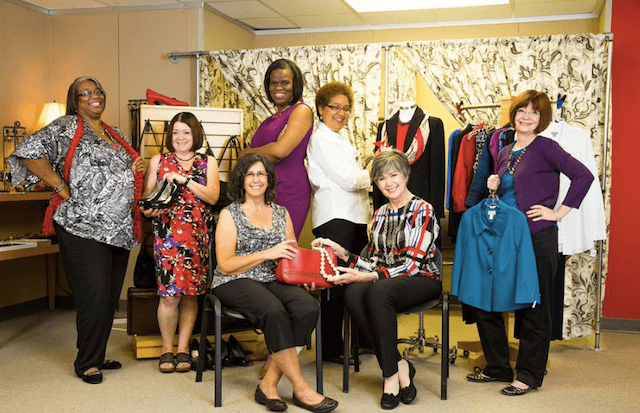

“An item of clothing that may not have relevance to one person could mean the world to someone else,” explains Joi Gordon, CEO of Dress for Success.
Gordon took on her leadership role at the nonprofit organization in 2002. And she has borne witness to the hundreds of thousands of lives changed by a simple reclaimed suit once destined a landfill that was instead used as a catalyst for putting a woman back to work.
While it may be difficult to believe that a reclaimed wardrobe can do the trick of helping a woman gain the confidence to land a job, various studies have linked the positive effects of feeling well-dressed to higher performance outcomes, stronger feelings of self-worth, and feelings of power.
Dress for Success understands the science, but most of all, it has both understood and met the need.
Dress For Success has served nearly 1 million women since its inception in 1997. Boasting over 145 affiliates located in 20 countries across the world, the volunteer-operated clothing boutiques offer a second chance to women overcoming personal hardships, unemployment and other life challenges.
What’s most impressive about the organization is the built-in ecosystem that enables multi-person participation beyond the blind-donation model to which we’ve become accustomed. There’s a level of care and commitment to the needs of women that donors can feel good about when providing their intact and stylish discards to Dress For Success boutiques.
“We are lucky to have so many generous women that donate their nearly-new professional attire to our boutiques all over the world," Gordon says. "We get thousands of pieces varying in style, color and size that our [clients] treasure.”
Through the years, Dress for Success has seen corporate partnership participation run the gamut. Brands like Talbots, Adrianna Papell, Vanity Fair Lingerie, Pandora Jewelry, Spanx and others often donate brand new merchandise, which is then sorted and dispersed amongst affiliate boutiques around the world.
From workwear to jewelry to shoes and handbags, the array of donated items provide women with storied pasts a hopeful new beginning. Dress for Success clients are treated like women with potential, starting with being paired with a personal image consultant who works hard to help them shop the donated threads for a pulled-together look that fits them and helps them get on the road to achieving their goals.
But the makeover doesn’t stop at the upcycled shopping spree. Clients are also paired with career coaches and mentors who review their resumes and help them practice their interview skills. Some women can even equip themselves with financial literacy classes, computer workshops, and a host of other skill-building opportunities to round out their experiences and compete in the job market.
“We have major global brands that sponsor our continuum of services programs such as the Walmart Foundation, which created and continues to fund our Going Places Network Program, and Tracfone, which donates hundreds of cell phones to our women and sponsors our Success is Calling program, a training course in how to ace a phone interview,” Gordon adds.
The model goes far beyond the outcome of keeping good clothes out of the waste stream by providing a network of support to women in the form of workforce development, economic equity and community-building within their respective cities. In fact, potential affiliate partners undergo a rigorous, highly selective, year-long application process prior to being granted the go-ahead to open a location in their community.
Prior to coming to Dress for Success, Gordon says many of the women the organization serves have never tried on a suit before.
“It is a brand new experience for them," she explains. "The suit is just the beginning of her transformation. We offer a holistic approach that goes far beyond the suit and transforms her from the inside out. So what starts with a repurposed suit turns into this beautiful experience and development of inner strength and confidence.”
Those that land employment are invited back to select an additional five outfits to complete their professional wardrobe for an entire week. At this time, Dress for Success also extends an invitation for women to join its Professional Women’s Group — a networking and professional-development program that offers the tools and support for retaining the job and ultimately achieving economic independence.
Many clients remain involved, serving as ambassadors, mentors and volunteers for the organization.
“Dress for Success brings together a community of women from all backgrounds and different walks of life and gives them the tools they need to achieve self-sufficiency. We want to empower all women and give them the confidence they need to succeed both personally and professionally,” Gordon says. “When a woman walks through the doors of Dress for Success, we aren't simply offering her a suit, we are offering her a lifetime of support.”
Image courtesy of Dress for Success Social Media
How a Bad GMO Bill Becomes Law
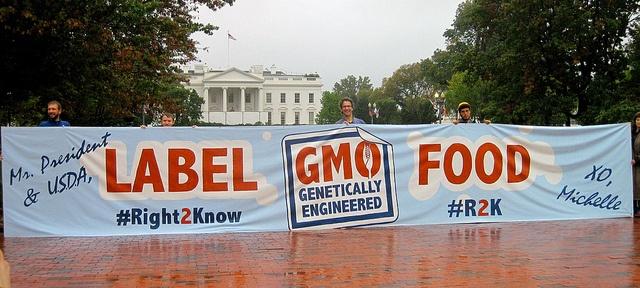

It's done. A new federal law that requires labeling of all genetically modified foods (GMO) was finally signed by President Barack Obama last month. But will the law really increase transparency?
The answer to that question depends on who you ask. And as some critics note, it also may depend on who is seeking that transparency.
Federal GMO labeling bill: What it does and doesn't do
"[The] bill would exempt most current GMO foods from being labeled at all," Andrew Kimbrell, an attorney with Center for Food Safety, one of many organizations advocating clear labeling for GMO foods, wrote in the Huffington Post. That's because, in an effort to appease a variety of interest groups (and take into account that no one legislative process may fit all types or sizes of manufacturers), the new legislation exempts some companies from complying with the law.
The new law, which was signed into law on July 29, was supposed to establish a simple, uniform labeling system for foods that contain bioengineered (GMO) ingredients, such as genetically modified corn. It's estimated that 75 to 80 percent of the foods now on the market are genetically modified, and consumer groups pushed for years to mandate some sort of labeling on packages by which shoppers can readily identify such foods.
But as many critics point out, what the federal law does is far from what advocacy groups wanted. In fact, it's far from what the Vermont state law that went into effect on July 1 strove to accomplish. In a nutshell, it:
- establishes the U.S. Department of Agriculture (USDA) as the sole arbiter when it comes to rules governing GMO ingredient labeling
- prohibits states like Vermont from establishing their own state guidelines for labels
- also bars states from creating seed labeling laws, such as those in Virginia and Vermont that ensured farmers could access non-GMO seeds easily
- strips laws that made it easier for consumers to buy non-bioengineered fish
- gives the USDA two years to come up with appropriate wording for its new rules.
The new law exempts organic foods from being labeled, simply because organic foods imply by their definition that they don't contain bioengineered ingredients.
But critics argue that, in addition to its sweeping impact on state laws, the legislation also comes with a litany of confusing verbage.
The Food and Drug Administration, which got a sneak-peak at the legislation before it arrived at the president's desk, raised a number of issues on this score. It pointed out that some of the bill's wording was actually incorrect in how it described and identified the genetically engineered products that would be exempt. Oil, which is often made from genetically engineered crops, should receive labeling, the FDA says. But thanks to the bill's complex wording, oils will not be labeled because the legislation was only designed to cover a product that "contains genetic material."
"[Oil] made from GE (genetically engineered) soy would not have any genetic material in it," writes the FDA. "Likewise, starches and purified proteins would not be covered." Those three ingredients are some of the most widely used substances when it comes to bioengineered foods.
If the legislation has the capacity to fall short on identifying today's most common genetically engineered products, will it be able to keep up with identifying tomorrow's new technological advances?
'Discriminatory' in nature
The legislation, which proposes the same labeling processes that was put forth last year in the Senate, leaves it open as to how products should be identified. The U.S. Department of Agriculture has two years to define the packaging rules. But one method, which allows for manufacturers to list the data on their website and then provide a quick reference (QR) code for smartphone scanning, has civil rights advocates alarmed.
"The GMO labeling law's principal thrust is to rely on QR codes which shoppers will scan to gain product information relative to GMOs," noted Rev. Jesse Jackson in a letter last month to President Obama.
"However, 100,000,000 Americans, most of them poor, people of color and elderly, either do not own a smartphone or an iPhone to scan the QR code or live in an area of poor Internet connectivity." While it may be assumed that many low-income families live in metropolitan areas, the fact is, most live in rural areas, where Internet coverage is often less available. According to the USDA's own statistics, 18.1 percent of low-income families lived in rural areas in 2014, while 15.1 percent lived in cities.
"There are serious questions of discrimination presented here and unresolved matters of equal protection of the law," Jackson cautioned.
And it isn't just a question of Internet access, noted Andrew Kimbrell of the Center for Food Safety. "More than 50 percent of America’s low-income and rural populations ... and more than 65 percent of the elderly don’t even own smartphones," an extravagance that many may not even be able to afford. This "digital divide" would be even more apparent and disempowering if poor families and disabled citizens couldn't access the same information that other income groups could find standing in the store aisle.
The circuitous road to transparency
Last year, when news that the legislation's predecessor (Senate Amendment 764) failed to muster enough votes to bypass debate and was temporarily stalled, we raised one more problematic concern about the bill that ostensibly was supposed to create transparency about GMO foods: its lack of procedural transparency.
Senate procedures allow bill amendments to be attached to other amendments, even if what they are attached to has absolutely nothing to do with the bill being proposed. That allows senators to quickly suggest wording changes, like edits for a particular bill, rather than submitting a whole new bill in its place.
But it's a process that can also allow lawmakers to replace the wording of an old bill that has already been made law, with the wording of a new, entirely unrelated amendment.
So for example, a notoriously controversial GMO regulation bill can be attached to a highly popular bill to fund a marine education program and given the same "nickname." Presumably this allows for speedy discussion and debate of worthwhile topics for consideration. Except that, as Kimbrell pointed out, the amendment known formally on paper as the "Bill to Reauthorize and Amend the National Sea Grant College Program Act, and For Other Purposes" (SA 764), and known informally as the proposed "GMO bill," never received debate or discussion in the Senate. The DARK Act (Deny Americans the Right to Know), as it was called by critics, truly lived up to its name, Kimbrell wrote. "The bill's moniker is apt."
That's not to say that a number of senators didn't offer amendments that reflected the spirit of Vermont's GMO labeling law. Sens. Bernie Sanders (D-Vt.) and Jeff Merkley (D-Ore.) were among those who attempted to build consumer concerns into the text and to bring the issue to discussion, without success.
On July 7, Sen. Mitch McConnell (R-Ky.) moved to have the entire text of the Sea Grant Program amendment replaced with text from the GMO amendment. (It didn't matter; the text to the shell known as the 2015 Sea Grant funding bill was passed a year earlier, and funding was already in place.) And with quiet speed, the GMO bill passed and ushered on its way to the House. Barely three weeks later, on July 29, the bill became law with President Obama's signature.
Not surprisingly, Obama received a fair amount of criticism from consumer advocacy groups for signing the bill. But perhaps the real question is how a topic that garnered so much attention, so many state referendums and so much consumer angst could follow such a convoluted path to victory.
Consumer advocacy groups vowed to make sure there will be more transparency and consumer rights built into the coming USDA rules. Others, Kimbrell noted, are looking at the legal implications of a law that has the ability to disenfranchise the rights of low-income, blind, low vision, physically impaired, mentally impaired and other consumer groups that can't take advantage of smartphone technology.
It should be a busy two years.
Image credit: Flickr/Alexis Baden-Mayer
Reader Beware: Think Tanks and Universities Increasingly for Hire by Companies
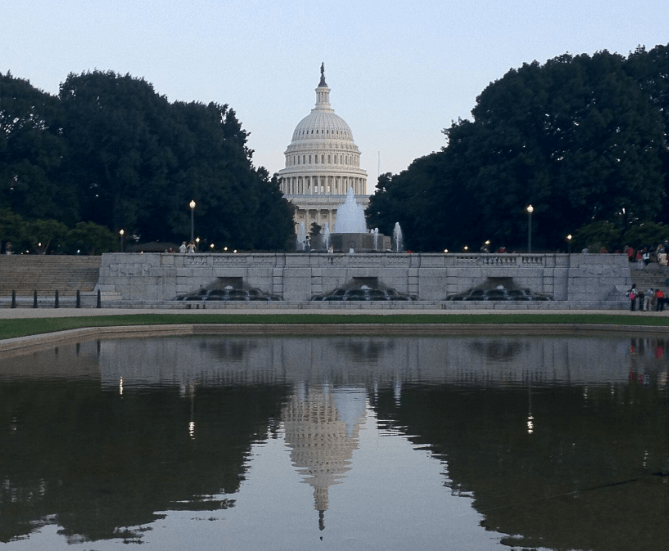

A recent New York Times investigation of 75 think tanks revealed many scholars and researchers affiliated with these organizations often took on other positions, including roles as corporate board members, lobbyists and outside consultants. No federal law or even the norms of ethics dictate this as wrong or illegal, but the Times found that disclosures related to such work is often scant, if noted at all.
The results should put readers on notice. When a scholar at a well-known think tank or university is presented as a subject-matter expert on a range of issues, from climate change to human rights, a quick background check is needed to ensure these experts are not expressing their views with strings attached.
We are quickly impressed by someone who has a Ph.D., who is a “fellow” at a think tank, or is a distinguished professor at a top university. And we should be: Accumulating the research to write those dissertations can take years, evident in the abundant number of ABDs (“all but dissertations”) who either ran out of money or patience or started a family and decided to enter the workplace.
More than dedication is needed to accumulate all that knowledge, so these experts are certainly entitled to cash in, either with money or in the media. And the hard work does not stop once academics become faculty members or researchers. As a result, they should enjoy the fruits of their labor, as when business school professors are hired as consultants by top companies or political-science experts appear on major news networks to discuss this year’s election.
Nevertheless, these same experts should publicly disclose their affiliations and the payments they received from these organizations.
Greenpeace, for example, has investigated the work of academics who are affiliated with companies and trade groups that attack climate change science. One Penn State professor, who also testified in hearings led by Texas Sen. Ted Cruz, insisted his work was completely independent before Greenpeace researchers revealed he had received payments from the coal company Peabody Energy.
Academics and scholars for hire are nothing new. During the mid-1990s, Princeton University was accused of serving as a front for the Turkish government, which endowed a new chair of Turkish Studies staffed by a former lobbyist for the country. Armenian-Americans accused the professor, Heath Lowry, of spending his career denying the Armenian Genocide and working as cover for Turkey’s dubious human rights record.
In more recent years, some accused companies of hiring academics in an attempt to defeat, and then water down, the Dodd-Frank financial sector reforms legislation in Congress. When Republicans took control of the House in 2011, they eliminated a rule requiring experts to disclose private-sector ties before they testified, the Nation reported in 2013. Such lack of disclosure effectively allows selective testimony to be delivered at Congressional hearings.
To be fair, this ongoing scholars-for-hire scheme benefits those on the right and left alike. The Times’ investigation showcased the work of Dr. Mark McClellan, a former Food and Drug Administration commissioner. McClellan, who until January was a fellow at the Brookings Institution, also served as a board member of Johnson & Johnson. At hearings last November, he defended Johnson & Johnson’s high-priced drug treatments for hepatitis C. Last month, Brookings rewrote its conflict of interest policy in a move to bolster disclosure and reduce perceived bias.
Carol Browner, EPA administrator under Bill Clinton, was a paid consultant to the nuclear energy industry while she was a fellow advocating action on climate change for the American Center for Progress. As is the case with many of her peers, Browner was an unpaid fellow – but such affiliation with these organizations has certainly allowed academics to cash in by offering their services as consultants to corporations and industry trade groups.
Academics have a role as arbiters on the endless stream of information needed to make important decisions. While it is ingrained in us to accept their research, it behooves these experts to disclose the organizations with whom they work.
Four years ago, when I was a guest of HP at a recycling tour, an executive touted the company’s study that insisted using paper to print was “greener” than going paperless. When I noted that of course a corporate-sponsored study would support HP’s stance, and asked why a neutral third party like a university did not undertake the study, the representative became flustered. Increasingly defensive, she blurted out, “No one would read a study!” Well, the fact is, they do, because we trust those who spend years researching and working within their chosen fields.
But the lesson here is that when quoting anything coming out of a university or think tank, a quick Google search could reveal more questions and answers. The time is now to demand from academics the same thing we want from corporations: transparency.
Image credit: Leon Kaye
6 Ways for Students to Get Sustainability Job Experience That Looks Good on Resumes


Editor's Note: This post originally appeared on the University of Wisconsin Sustainable Management blog.
By Missy Katner
Getting your first sustainable management job isn’t easy. As Oliver Balch wrote in the Guardian, “Only the best and brightest — and most bloody-minded — need apply.”
Why is it so difficult?
The answer: Companies and governments have started to recognize that sustainability is good for business. But positions such as sustainability coordinator or corporate sustainability officer are still few and far between — and competition is steep. Also, most professionals who lead sustainable business projects do not have the word “sustainability” in their title or job description, so finding these positions isn’t easy.
There is no road map for a sustainability career, and that makes it tough to know where to start. But don’t panic. With a little planning and initiative, you can discover new opportunities and get sustainability job experience that boosts your resume.
Here are six ways to do just that. (Bonus: with real-life success stories from UW Sustainable Management students!)
1. Get an internship at a company you admire
There’s no getting around it — internships are an effective way to get practical experience, make connections, and test the waters before leaping into a sustainable business career. And it could lead to a full-time job.
A 2015 study found that 72 percent of students who completed paid internships with private, for-profit companies received job offers prior to graduation. Just over 50 percent of students who had paid internships at non-profits were offered jobs.
So, how do you choose the right internship for you?
Pick your dream organization and check the job boards. Or look for an opportunity that gives you the chance to wear multiple hats — perhaps at a smaller organization, startup, or nonprofit—so you can explore two or three different functional roles.
That’s what UW Sustainable Management graduate Stacie Reece did. For the degree program’s capstone course, Stacie chose to complete a business internship at the non-profit Sustain Dane. When the director of sustainable business initiative resigned, Stacie was asked to fill the role.
“I gained a ton of connections to sustainable businesses,” Stacie said. “Even if I hadn’t gotten the job I have now, I am confident those connections would have led to other career opportunities.”
2. Work on your people and business skills
Employers will be more likely to hire you for a sustainable management job if they think you have strong people skills. Directors at major corporations were asked which qualities they look for in sustainability applicants:
"Many … are generic for good managers everywhere: good people skills, the ability to drive change, and strong networking skills."
How can you improve your interpersonal skills? Two steps: read and practice.
Eric Barker has written some helpful, research-backed posts about improving interactions at work and in life, like how to read people,become a great conversationalist, and improve your body language and be more influential.
Ok, your people skills are locked down. Anything else? More advice from a corporate director:
"People who want to save the world but can’t understand a corporate balance sheet won’t cut it, he says. Business folk in mainstream functions are inherently suspicious of the soft world of sustainability. To make inroads, you need to be able to speak their language and understand their priorities."
Understanding the business world takes education and experience. To brush up on your business knowledge, try listening to top podcasts such as HBR Ideacast, The $100 MBA, or How to Start a Startup.
If you’re looking for an in-depth, specialized sustainable business education, consider a bachelor’s or master’s degree in Sustainable Management.
As for experience, see No. 1 on this list.
3. Volunteer
The ultimate test of your passion and commitment? (No, not marriage.) Volunteering.
Take Ken Holdorf — while job hunting, this UW Sustainable Management graduate volunteered at the Eco Justice Center, a farm operated solely on renewable energy. Now, he has a position at the Michigan Department of Environmental Quality.
Ken’s volunteer work served a triple purpose: It helped him gain valuable sustainability job experience, explore different roles that interested him, and confirm his passion for the work.
4. Start a green project at your current workplace
Want to transition to a full-time sustainability job? From Shannon Houde, sustainability careers adviser:
"A key interim step … is to gain experience in your current role. Joining the company’s volunteering scheme or championing a green initiative in the office all help you earn your sustainability spurs and prove your interest in the subject."
Opportunities for sustainable development are found even in the unlikeliest places. UW Sustainable Management grad Matt Vanderloop is an auditor for the Wisconsin Department of Health Services. He started a paperless initiative there—and since his department involves medical records, going paperless is huge.
There are countless stories like this from students in the UW Sustainable Management program: One led a $1.7 million project to convert his Air Force base’s airfield lighting system to LED. Another works at Goodwill and has drastically improved the recycling program for scrap glass.
Employers are more willing to hire sustainability professionals if they think they’re getting an innovator who can help them do business better. And, in developing sustainability projects at your current workplace, you could convince upper management to carve out a new position for you. A 2013 survey by Greenbiz showed that 55 percent of corporate responsibility and sustainability professionals were internal hires.
5. Get LEED certified
Passion and credentials go a long way. If you have a sustainable management degree and are interested in specializing in green building or environmental design, look into LEED certification. To employers, a LEED credential signifies that you’re a leader in the green building movement—and that you’re committed to professional growth.
The U.S. Green Building Council offers five different LEED certification specialties: building design and construction, operations and maintenance, interior design and construction, neighborhood development, and homes. Each specialty has its own exam, which costs anywhere from $250 to $550 to take.
6. Join a sustainability association.
Just like volunteering, joining a sustainability association is all about making connections and showing your commitment.
Choose an organization that fits your interests and goals. Here are just a few.
- American Sustainable Business Council
- International Society of Sustainability Professionals
- Sustainability Consortium
- U.S. Green Building Council
- Sustainable Food Trade Association
- Sierra Club
Missy Katner writes and manages the blog for the online University of Wisconsin Sustainable Management bachelor's and master's degree programs. She is a biologist turned writer—online and previously for magazines such as Prevention, The American Gardener, and Delta Sky—but never lost her deep fascination for environmental science and sustainability.
Carbon XPrize Announces Entries Vying for $20 Million in Prizes


The Carbon XPrize is a five-year competition that seeks to convert carbon emissions into successful, profitable and useful products. Forty-seven organizations from seven nations will compete in this $20 million competition. Announced last year, the fundamental aim of the prize is to rethink how society tackles CO2 mitigation and addresses climate change while creating new economic opportunities.
The contest is sponsored by U.S.-based NRG Energy and Canada’s Oil Sands Innovation Alliance (COSIA), which are representative of the fossil fuel sector. And the prize surmises the challenges this industry needs to address if it is going to stay viable in the 21st century. Officially branded as the NRG COSIA Carbon XPrize, the competition could result in taking one of the world’s most pressing environmental and economic problems -- carbon emissions -- and churning them into new revenue streams.
The competitors come from across the globe and include large companies, startups and university researchers, Paul Bunje and Marcius Extavour of the XPrize wrote in a blog post. All participants were asked submit detailed plans on how they would convert CO2 into products such as alternative low-carbon fuels, building products, or base materials that could be used to manufacture new consumer goods and industrial products.
But according to Carbon XPrize’s managers, this competition is about more than converting CO2 from a power plant into products. The winning organizations must also show that they can use a minimal amount of energy, water and land while creating these new materials.
The finalists’ business models are all over the global map. Huvr Frost of Ottawa, Canada, seeks to turn CO2 from flue gas emissions into a material that could be used for energy storage. Aljadix of Switzerland developed what it says is a “carbon-negative” biofuel from algae. And in Southern California, UCLA’s Carbon Upcycling project insists it can extract CO2 from power plant smokestacks and convert it into a construction material that boasts the strength of cement without its time-consuming curing process.
The competition has two tracks: one focused on harvesting CO2 from coal power plants and another devoted to converting emissions from natural gas-fired plants. A judging panel is now evaluating this first round of competitors, with as many as 15 semi-finalists for each track to be announced later this year. The finalists will be chosen at the end of 2017, and up to 10 companies will split a pot of $5 million to continue their research and development.
Those organizations have until February 2020 to perfect and scale their technologies before the final two winners are chosen. Each winning organization will score a $7.5 million award. But the hope is for a bigger outcome, one with more innovations that prevent climate change risks and inspiration for a new industry unfathomable just a few years ago.
Image credit: Carbon XPrize
How Can Data Drive Decision-Making in Corporate Responsibility?
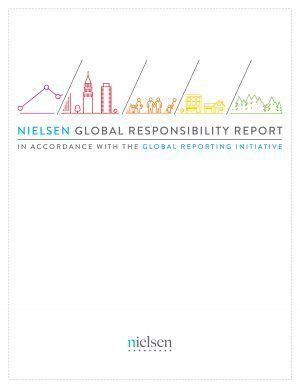

By Crystal Barnes
Every action is a data point. And in a world where you can do pretty much anything from your smartphone, we are constantly creating and cultivating an increasingly data-driven society. Today, you can track everything from your daily steps to profile views, while brands can measure everything from page clicks to purchases.
With all of this noise constantly competing for our attention, how do we separate what’s important from all the rest?
At Nielsen, we’ve been focused on leveraging consumer data to create actionable insights for our clients for almost a hundred years. Our corporate responsibility (CR) program was built on this legacy of using data to drive decision-making. Since 2010, our focus has grown from engaging employees through volunteer programs to monitoring the environmental, social and governance (ESG) issues that matter most to our stakeholders and to our company. We do this by empowering our people to design and implement the programs and policies that advance our company and have an impact on the communities where we operate.
Clients, investors, employees and the general public are increasingly focused on the corporate responsibility issues that matter most. Recognizing the unique intersection of industry concerns and a company's core competencies drives a more comprehensive understanding of what’s most material to a company and its stakeholders. For Nielsen, these material issues include areas like data privacy and security, greenhouse gas emissions from energy and travel, supply chain responsibility and our employee experience.
Having a fundamental understanding of the most material issues unlocks the potential to drive business opportunities and create shared value for your organization. Like many companies, we’ve made a conscious decision to expand the umbrella of corporate responsibility — moving it from a “nice-to-have” to a core contributor and factor in our long-term viability. Our CR team operates as a key business partner for various groups across our business, such as human resources, vendor management, investor relations and environmental sustainability. To help manage these diverse needs, we’ve developed an extended network of leaders across the business focused on collaboration to ensure that we are regularly thinking and acting responsibly and sustainably in all that we do.
With this mission in mind, data presents a unique opportunity to focus on measuring what matters — and to do so through the lens of longevity and collaboration. Internally, this means raising the mirror to our own practices — emphasizing the need for continuous improvement and increased transparency. But we’re not just asking ourselves. We want to know what data matters most for our clients and communities in order to collectively address social challenges. In our first Nielsen Global Responsibility Report, we recognize that measuring what matters is not only key to our business’ value proposition but also essential to how we can improve our own performance. It's our core belief as a company: that transparency and measurement create value.
When we set out to put together this first report, aligned with the Global Reporting Initiative (GRI) G4 standards, we knew that the data we had about our own programs and operations could unlock new opportunities: reducing emissions and energy use at data centers; using the power of analytics to enhance ongoing talent development, retention and recruitment efforts; and instituting ESG requirements for top suppliers. Working together to collect and analyze our data created opportunities to improve existing programs and start new ones.
We have not only been able to better respond to our stakeholders’ concerns, but we can also unearth new opportunities that weren’t previously considered. Evolving and responding to the forces of the future is not optional. In order to create value for our stakeholders today, data is a key driver to identify areas of improvement, measure our progress, and increase our ability to stay nimble and do more. We recognize that this isn’t a linear process, and we won’t get there alone; we won’t do it all in 2016, either. With long-term goals in your purview, it’s critical to create an overall structure today that will enable success tomorrow.
Nielsen is not alone in these efforts. The Government & Accountability Institute has noted a rise in sustainability reporting from just 20 percent of companies in 2011 to 81 percent in 2015. While the business case for sustainability is becoming an easier sell, investors, clients and employees want more out of those sustainability reports than they did even a couple of years ago—especially more clear, concise information about how and why your company provides real long-term value as an investment, supplier and employer.
Data as a critical part of our sustainability strategy is here to stay — whether it’s the data and expertise we provide to nonprofits through Nielsen Cares with skills-based volunteering and in-kind giving, or the collection and analysis of our own data to help us make better, more informed decisions about how to operate our company more responsibly and sustainably. The question for companies like ours is not whether we measure our efforts, but how we measure what matters most to our stakeholders and the communities we serve.
Crystal Barnes is the vice president of corporate social responsibility at Nielsen.
Many UK families find it tough to afford a standard of living


by Sangeeta Haindl — The Prince’s Charity In Kind Direct, an organisation dedicated to redistributing donated goods to thousands of charities across the UK, is reporting a sharp increase in helping people cope with destitution. Its latest annual impact survey shows that the number of charities in its network being asked to give out essentials such as toothpaste, shampoo and nappies to people struggling has risen sharply, year on year. Crucially, 64 percent of charities report that In Kind Direct has helped them keep going.
Sadly, more and more people are asking their local charities for help that goes above and beyond what the organisation was set up to do. Older people’s support groups are being asked to provide users with toothbrushes and washing up liquid while youth clubs are being asked to provide young people with clothing and basic personal hygiene goods. 78 percent of the 1,024 charities and not-for-profit organisations responding to In Kind Direct’s survey reported that they provided products to people struggling to afford basic supplies in 2015, which is a 23 percent increase on last year.
Increased demands on this sector to deliver services not immediately connected to their core mission suggests that despite record employment, many people in the UK are still finding it tough to afford a basic standard of living which others would take for granted. 81 percent of the respondents to this report said that demand for their services had increased in the last 12 months, whilst 70 percent stated that their income had remained the same or decreased. These findings are further supported by recent research from the Joseph Rowntree Foundation, which found that 5.9 million individuals in the UK living in households with one to four children had incomes below the level needed for an adequate standard of living in 2013/14 - a staggering 45 per cent increase on 2008/1991.
Charities play a key role in promoting health and hygiene among disadvantaged populations, as some UK families are surviving on very little income, having to choose between buying food or washing powder. Thankfully, In Kind Direct has made a powerful impact on communities through the redistribution of £150 million worth of surplus goods from over 1,000 companies, as 80 percent of responding charities said that using In Kind Direct contributed to improved health and hygiene amongst their beneficiaries; 66 percent said that access to these goods helped to address poor physical and mental well-being and 57 percent said it helped to reduce isolation amongst receivers.
Being given products in times of hardship, particularly high-quality and branded items, can boost an individual’s self-esteem and confidence, paving the way for recovery. A whopping 87% of charities said that using In Kind Direct enabled them to source goods that they would never be able to afford, which would be regarded as presents and treats for people who would otherwise go without.
Photo Credit: In Kind Direct
Inclusionary Pioneers: Making the Case for Diversity in the American Workforce
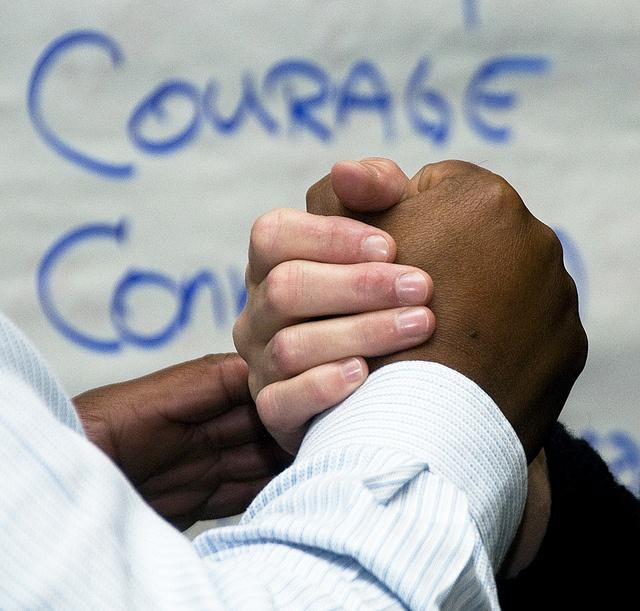

Communities talk about the value of diversity a lot these days. In our schools, our businesses and even in our support networks, fostering an inclusive environment where differences are valued and respected has become an assumed starting point to building a better, more cooperative living and working environment.
Of course, it wasn't always that way. It's taken decades -- some would say centuries -- to make the business case for diversity: that supporting gender and cultural inclusiveness is also essential for validating the brand trust of a company.
Today, we have the statistics to prove that diversity makes business sense. According to research published by McKinsey and Co., enterprises that embrace an inclusive business model perform better financially. Companies that are gender diverse are 15 percent more likely to outperform. And businesses that are ethnically diverse do even better: They are 35 percent more likely to excel beyond their industry median.
But as impressive as those numbers are, statistics often don't tell the whole story. They don't show, for example, what it's really like to be that "diversity pioneer" who lobbies for more inclusive hiring. They don't reveal what shapes the convictions of a leader dedicated to promoting more inclusiveness in the ranks. And they don't explain how difficult it is to be that self-driven leader who sees the gradual growth of a company's diversity as an extension of his or her own success.
We wanted to find out what kind of personal experiences shape the views of a diversity leader. What perceptions in his or her upbringing spoke loudest, and what concrete lessons did he or she learn about our multicultural world? How did it mold this person's definitions of diversity, and what lessons did he or she try to share with others?
This week TriplePundit spoke with two experts who dedicated their careers to teaching about workplace diversity and inclusion. Both women worked extensively within the private sector and later turned to consultancy as a way to promote the concepts of diversity. Interestingly, both credited their global outlook to the environments in which they were raised, and the personal experiences they felt most shaped their lives. Yet, it was work experiences that motivated both women to adopt careers focused on diversity and inclusion.
First encounters: Shaping a place for diversity and inclusion
For author, speaker and consultant Marilyn Tam, growing up in British-ruled Hong Kong taught her many subtle lessons about multiculturalism.
Although her family spoke Chinese at home and in her community, "there was an overlay of British influence" that defined community life, Tam recalled. Britain transferred Hong Kong to Chinese sovereignty in 1997. But until that time, the English language and British culture were an integral part of Hong Kong's own culture and vibrant commerce.
"[The] understanding of diversity came early, not because it was something that was taught, but because it was something I experienced," Tam told TriplePundit.
But it was her later move to the States that cemented her understanding that there could be another world with entirely “new perspectives and cultural beliefs" than her own. There were not only different cultural celebrations and traditions to experience, but also "really strongly-held convictions that may or may not be reflective of somebody else’s truth,” let alone the community as a whole, Tam told us. The recognition of the world's diverse cultures "came early and was very impactful on my life," she continued.
As a child, the sense of being different came early for diversity strategist Lenora Billings-Harris as well. Billings-Harris was born and raised in the United States. "As an African-American student in classrooms where I usually was the only African American, there was this sense of other, the sense of being different," she told 3p. That sense of distinctness helped to form her own appreciation of diversity -- and her understanding that distinctiveness can be a bridge to cooperation.
"Nowadays I really can’t say diversity without saying inclusion," said Billings-Harris, who told us it was her early career in the automotive industry that cemented her realization that honoring and respecting diversity helped promote an inclusive world.
Tam's vision of diversity is similar. "Diversity is actually, for me, the opposite ... of what we should be talking about, which is really inclusion," Tam told us. "[A] lot of times when we say 'diversity,' it is out of the good intention of bringing everybody together and, at the same time, to honor the differences." She said Canada's somewhat unique vision of diversity embodies this principle best: a mosaic, the idea that "[each] person shines for who they are, and together we become so much more. We create a beautiful, simplistic, powerful picture and community."
Leveraging personal experience to build an inclusive world
But for both of these women, it was work experiences that helped crystalize a focus on diversity and inclusion. For Tam, the message came early in her career, after completing graduate school and working as an economic consultant. Imbued with a determination to find a job in which she could make "a positive influence," she applied to a position at a bank and landed an interview. She had the grades and work experience. "It never occurred to me that anybody would look at me and say that I was unqualified based on some outside issues," Tam said.
When she didn't hear back from the employer, she called to follow up. The individual with whom she interviewed took the call. "We had kind of a nice conversation, but when it came to the key question ... he was kind but he basically said, in his own language of course, 'You are very nice but you are a girl, and girls are tellers.'" He also alluded to her ethnicity on the call, Tam said.
"It shocked me," she told us. "I have experienced many other [forms of] discrimination along the way, including being refused service in a restaurant. But it never occurred to me that, for a professional career, I would be denied the opportunity because of the way I looked – both in gender and in ethnicity."
"And that made me realize: They were losing. Of course I was hurt and surprised, but at the same time I thought, 'Wow! They are losing too, because I have so much to give. And they will never find out [just] because of the way I look.'"
This epiphany, Tam said, helped shape her business career and her outlook toward the inclusive workplace. Her drive to make a positive influence found its niche several times in some of the biggest corporations in the U.S. She served as CEO of Aveda Corp, president of Reebok apparel and retail, and vice president of Nike -- helping to turn concepts like employee wellness and inclusive hiring into guiding principles for today's businesses. The founder of four businesses, she is the recipient of several humanitarian awards, including the Artemis Award (Greece) for her business and humanitarian work, and the Reebok Human Rights Award for her efforts to promote humanitarian principles. Her books, "How to Get What You Want," which was published in 2003; "The Happiness Choice," (2013) and most recent "Soul Over Matter," (2016) have been equally well received.
For Billing-Harris, it was the heart-wrenching admission from a student that helped her find her "calling" as a diversity leader. "I had gone to South Africa to deliver a customer service program [for the automotive industry]," Billings-Harris said. It was a pivotal moment in South African history: Nelson Mandela had just been released from prison. "So people were very afraid," she recalled. "[Never] on the continent of Africa had a country been moved to democracy without lots of bloodshed."
After the workshop, a woman came up to the front of the room to speak with her. Billings-Harris already knew this was an unusual visit because she was told she would be delivering the workshop to an all-male audience. "Her reaction told me something was awry," Billings-Harris recalled. And after they talked, she learned why.
"It was the first time ever in her life ... that she had seen a professional Black person, let alone a professional Black female." At that time in South Africa's history, the concept of a Black professional woman delivering a customer service program to a room of all-male employees was unheard of. "So it was shocking to her because her culture had taught her that Black people had no value. And she didn’t expect that I would be able to teach her anything. So at the end of a day together, my being there enabled her to see the possibilities and to begin to see how inhumane the treatment had been of Colored Africans – anyone who was not white."
Billings-Harris said that encounter helped the woman see that "this was just not right, and how much South Africa as a country would lose if they did not recognize the potential of the Black South Africans in their country.
"We cried in each others' arms. And as she told me this experience helped her to [realize] that she had to go home and convince the men in her life to put down their weapons. At that moment," she told us, "I knew I needed to do this work."
Billings-Harris used the momentum of that experience to launch her own consultancy business, turning her focus toward teaching business leaders how to leverage diversity and improved communication to build inclusive, stronger companies. Her publications include the books The Diversity Advantage: Guide to Making Diversity Work, (3rd ed., 2013) and "Trailblazers: How Top Business Leaders are Accelerating Results through Inclusion and Diversity" (co-author with Redia Anderson, 2010), as well as a selection of articles, recordings and webinar trainings. She has been recognized by Diversity Woman Magazine as one of the country's top 20 diversity leaders, and like Tam, she continues to use her expertise to help educate and promote the principles of diversity and inclusion around the globe, including in Israel and South Africa.
Lessons of diversity and inclusion
Both Tam and Billings-Harris recognized concrete lessons that have become the underpinnings to their messages regarding diversity.
"Diversity is an absolutely crucial [part] of a company’s DNA management and every aspect of its work,” Tam told us. Today's population growth in developing nations will most likely yield tomorrow's workforce. Strategies that promote diversity and inclusion on all levels now will be come a defining metric for tomorrow's successful businesses, she concluded.
"All of us are responsible for creating that inclusive environment that enables us to take advantage in a positive way of diversity among us," Billings-Harris said. It's a viewpoint embodied by the South African expression ubuntu, and which she has adopted as the definition of what she wants to impart in her teachings: "I am because we are, and we are because I am."
"We're all responsible" for promoting diversity and inclusion, she concluded firmly. So, now the question remains: How will you take part?
Images: 1) Flickr/Oregon Department of Transportation; 2) Marilyn Tam; 3) Lenora Billings-Harris
Why California Must Continue To Conserve Water


California Gov. Jerry Brown issued mandatory statewide water reductions of 25 percent in 2015. The reason is simple: The entire state was in a drought. This summer, Brown lifted the mandatory reductions due to the abundance of rain the state received last winter and spring. El Nino weather patterns caused the above-normal rainfall.
But most of California, save a small area in the north that is classified as “abnormally dry,” is still suffering drought. A swath of the middle of the state is in the worst category, “exceptional drought,” according to the U.S. Drought Monitor. It's highly likely that drought will continue next year as what follows El Nino is La Nina, which will “exacerbate drought conditions across the Southwest,” Accuweather reported. Central and Southern California could face the brunt of La Nina which could include “below-normal snowpack in the southern Sierra Nevada.”
“I would be concerned about the drought continuing,” Dave Pierce, who does El Niño and La Niña forecasts at the Climate Research Division of the Scripps Institution of Oceanography in La Jolla, told the Orange County Register.Californians didn’t quite meet the state’s mandatory 25 percent water reduction. From June 2015 to February 2016, statewide cumulative water savings totaled 23.9 percent. But Californians conserved almost 1.19 million acre-feet of water, enough water to supply 5.9 million Californians for an entire year. That many people is equivalent to the combined population of San Diego, Riverside and Tulare counties, or 15 percent of the state’s population.“Even if the El Niño had brought us normal rain, or even twice as much rain as we normally get, it’s still a cumulative effect; the dead stuff is still dead,” Gordon Martin, the fire management officer at the Trabuco Ranger District of the Cleveland National Forest, told the paper. “To get out of four years of drought, it takes four years of above-normal rainfall,” Martin said. “We didn’t get that.”
Although Californians fell short of the mandated 25 percent reduction, they still conserved quite a bit of water. As State Water Resources Control Board chair, Felicia Marcus, said: “Californians rose to the occasion, reducing irrigation, fixing leaks, taking shorter showers, and saving our precious water resources in all sorts of ways.”
“Conservation should be the California way of life," Marcus said. And she is absolutely correct. This is a state that will suffer periodically from drought, given that climate change increases the likelihood and severity of drought. Climate change, or the warming of temperatures that it causes, accounted for 8 to 27 percent of the state’s drought in 2012 to 2014, according to a study published last year. In other words, climate change contributed to California's drought.
In addition to conserving something we all need to live, water conservation measures translate into electricity savings. The water conservation rate Californians achieved from June 2015 to February 2016 yielded electricity savings of 922,543 megawatt hours, which can power 135,000 homes for an entire year, according to research from the University of California, Davis. The water conservation rate also led to greenhouse gas emissions reductions of 219,653 metric tons, equivalent to removing 50,000 cars from the road for a year. So, water conservation is something that is all-around good for the environment.
And water conservation is something that needs to be a permanent reality in California. As the Los Angeles Times editorial board put it, “ If the drought emergency is over, it’s only because drought is no longer an emergency, but a permanent reality.” That permanent reality needs to make all Californians extra conscious of water and the need to conserve every drop they can. Or as the board advises, “Water agencies and their customers would be wise to be ever more respectful of water and ever more parsimonious in their use of it.”
Image credit: Flickr/Aqua Mechanical